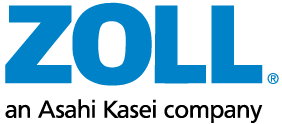How to Use an AED
What is SCA?
Each year, the NHS Ambulance Services assist approximately 30,000 patients after they experience sudden cardiac arrest (SCA) outside of the hospital. Sudden cardiac arrest occurs when an electrical malfunction of the heart causes it to suddenly stop beating properly, ceasing blood flow to the victim’s brain, lungs and other organs. The signs of sudden cardiac arrest can include:
- Heart palpitations
- Sudden collapse
- No pulse
- No breathing
- Loss of consciousness
Responding to SCA
An automated external defibrillator (AED) and high-quality CPR can dramatically improve the chances of survival from sudden cardiac arrest. Unfortunately, many victims who need CPR and an AED do not receive early defibrillation, which can mean the difference between life and death.
Cardiac arrest victims who receive prompt CPR accompanied by a shock with an AED survive to hospital discharge 50-70% of the time, compared to the average survival rate of 7%-8%. This makes the use of an AED a critical step in the Chain of Survival for SCA victims. Familiarity with how an AED works might save vital seconds if you find yourself an unexpected rescuer in an emergency.
Let’s go over a few pieces of information that will help you feel more confident if you need to respond to an emergency cardiac event.
Steps for Using an AED
Most AEDs are designed to guide bystanders, co-workers, and other lay rescuers through a rescue using voice, text, or illustrations. When an emergency occurs and you observe any of the symptoms mentioned above, follow these steps:
- Call 999 immediately and send another bystander to find the closest AED.
- Check to see if the victim is struggling to breathe and if they have a pulse. If the victim is unresponsive and you cannot find a pulse, start performing hands-only* CPR immediately to maintain blood flow to vital organs.
- When the AED arrives, attach the electrode pads to the victim following the AED guidance. Once connected, the AED will automatically analyse the victim’s heart rhythm or ask you to push a button to start the analysis. Don’t touch the victim while the AED performs this analysis. Not all SCA victims require a shock immediately, and the AED will let you know what to do next. It may advise you to press a button to administer a shock, or it may automatically administer one. Be sure to follow the visual or audio prompts.
- After a shock is delivered, the AED will instruct you to continue performing CPR. Some AEDs will measure the rate and depth of your compressions and will instruct you to adjust what you’re doing in order to deliver high-quality CPR. Follow the AED prompts to improve CPR quality. Stay up to date with the latest CPR guidance by visiting the British Heart Foundation online.
- Continue administering CPR and following the prompts on the AED until emergency personnel arrive.
- If you notice obvious signs of life, discontinue CPR and monitor breathing for any changes in condition.
For more information, you can also check out a step-by-step demo of the ZOLL AED Plus® defibrillator for a demonstration:
Frequently Asked Questions About AED Use
AEDs are designed for easy bystander use, but you may still have some questions about the steps involved during a rescue. Here are a few common ones.
How Do You Apply the AED Electrode Pads?
First, open the victim’s shirt and look for any medication patches or jewellery. Wearing gloves, remove both and wipe the victim's chest dry. Attach the pads according to the instructions provided by the audio, visual, or text prompts from the AED. Most electrodes have an adhesive backing that will stick firmly to the victim's bare chest. Connect the other ends of the electrode pads to the AED if they are not pre-connected and continue to follow the AED's instructions.
Can an AED Be Used on Children?
Yes. Most standard AEDs can be used on children over the age of 8 or weighing more than 55 pounds. For younger or smaller children, the European Resuscitation Council recommends using paediatric electrode pads that deliver a shock at a lower energy level. Some ZOLL AEDs offer a paediatric setting, but all can be used with paediatric-specific pads. However, using a standard AED is better than simply waiting for emergency responders to arrive. Paediatric SCA victims are more likely to survive if defibrillation is performed.
What Is AED Certification?
AED certification is an optional component of CPR and first aid certification training. There are two types of AED certifications — one for professional emergency responders and one for community/workplace responders. Remember that you do NOT need to be certified to use an AED. AED certification offers an opportunity to practice responding to an SCA event in the presence of a certified CPR instructor, helping you be prepared and more confident should you need to use the defibrillator. You can learn more and sign up to be AED-certified here.
Sudden cardiac arrest doesn’t discriminate based on a victim’s age, health, or location. That’s why you’ll find AEDs in schools, offices, and other public spaces — anywhere large groups of people gather. AEDs are typically placed in highly visible locations in a case bearing a red heart sticker.
Now that you know the SCA signs to watch for and how to use the AED, you’ll feel more confident if you’re the bystander who is unexpectedly called on to grab the nearest AED and help in a rescue.
Resources
Learn More
Interested in learning more about how to use an AED? Check out our training videos.
*Hands-only CPR is recommended during the COVID-19 pandemic. Keep up to date with the latest guidance by visiting the BHF online.

